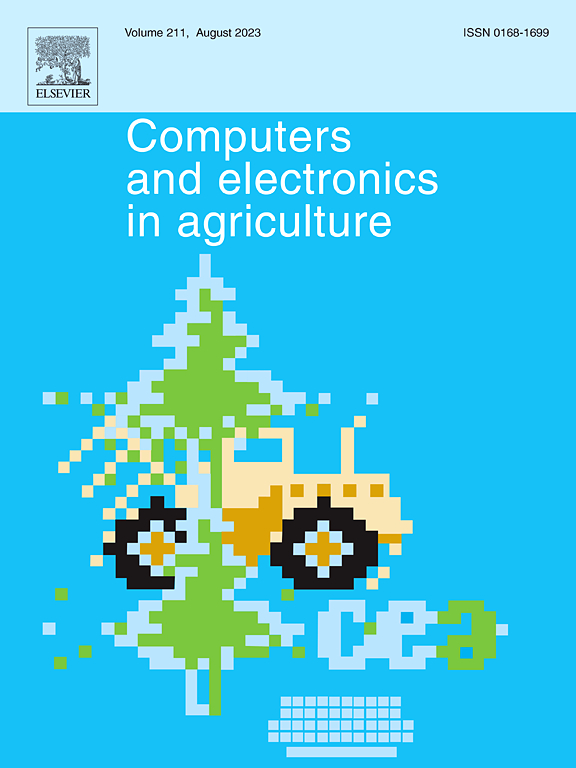Estimating leaf and canopy nitrogen contents in major field crops across the growing season from hyperspectral images using nonparametric regression
IF 7.7
1区 农林科学
Q1 AGRICULTURE, MULTIDISCIPLINARY
引用次数: 0
Abstract
Estimating leaf nitrogen (N) status is crucial for site- and time-specific crop N management, and can be accomplished more routinely than ever before with the advent of hyperspectral imaging techniques. Yet, there is still a lack of information about how leaf and canopy N of major crops could be predicted from different regression methods, hyperspectral feature types, and prediction pathways. We conducted field experiments with different N supply for rice, wheat and maize, in China. Features of canopy reflectance (Ref), vegetation indices (VIs), and texture information (Tex) were extracted from acquired hyperspectral images. These features and crop developmental stage (DS) were applied to estimate crop N parameters, using five nonparametric regression algorithms: Partial Least Squares Regression (PLSR), Support Vector Regression (SVR), Random Forest Regression, Deep Neural Network, and Convolutional Neural Network. The performance of PLSR and SVR models was significantly better than that of the others when field samples were limited. Use of feature combination in leaf N prediction was identified necessary from the improved model performance after incorporating the features of Ref, Tex, and DS. The prediction of the mass-based leaf N trait, leaf N concentration, was better than that of the area-based trait, specific leaf N (SLN). Values of SLN and canopy leaf-N content were predicted comparably via themselves direct and indirect methods, although indirect procedures involved more steps requiring the prediction of two or more component traits. These results were discussed in view of making use of available regression-models, features and pathways for best predictabilities so as to improve crop N monitoring for sustainable field N management.
求助全文
约1分钟内获得全文
求助全文
来源期刊

Computers and Electronics in Agriculture
工程技术-计算机:跨学科应用
CiteScore
15.30
自引率
14.50%
发文量
800
审稿时长
62 days
期刊介绍:
Computers and Electronics in Agriculture provides international coverage of advancements in computer hardware, software, electronic instrumentation, and control systems applied to agricultural challenges. Encompassing agronomy, horticulture, forestry, aquaculture, and animal farming, the journal publishes original papers, reviews, and applications notes. It explores the use of computers and electronics in plant or animal agricultural production, covering topics like agricultural soils, water, pests, controlled environments, and waste. The scope extends to on-farm post-harvest operations and relevant technologies, including artificial intelligence, sensors, machine vision, robotics, networking, and simulation modeling. Its companion journal, Smart Agricultural Technology, continues the focus on smart applications in production agriculture.
 求助内容:
求助内容: 应助结果提醒方式:
应助结果提醒方式:


